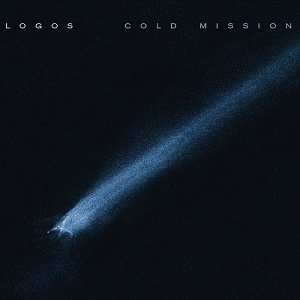Logos Cold Mission
Like much of the music Martin “Blackdown” Clark backs via his Keysound label, there is […]

Like much of the music Martin “Blackdown” Clark backs via his Keysound label, there is an aspect of the throwback to Logos. The key aspect of the London producer’s sound has been Wiley’s eski beat (and his accompanying, beatless “devil” or “bass” mixes), a decade-old sound characterized by cuttingly luminous synthesizer and inside-out rhythms—tunes that have been gutted other than a hi-hat or a bass pulse (or a laser, or a gun cocking), with the rest of the percussion coming erratically. Eski is still present on Cold Mission, Logos’ debut album, though he has also claimed luminary drum & bass label Metalheadz and drum & bass act 4Hero as influences. He’s even more explicit about his reverence in the record’s press release: “A lot of the album is informed by nostalgia for pirate-radio grime and the sense of loss I feel for that period—2002 felt like a much simpler time.” This much looking backward could kill a lesser artist, but somehow, even after all of his consideration of the past, Logos has managed to craft an incredibly vital LP.
Cold Mission‘s closest contemporary might be Jam City’s Classical Curves album from last year. That record offered a similarly reduced approach, though it was also dotted with steamy boogie and rap inflections; apart from the drum & bass referencing on a track like “Wut It Do” with Mumdance (which also feels close to Baltimore or Jersey club), Logos sticks to a fairly grime-y palette, even sampling vocals from the MCs themselves. But again, the producer usually overcomes his self-imposed trappings. At its best, the album is able to break up grime’s feral, alien intensity with an almost surreally earthy glow. If the “eskimo” aspect of Wiley’s sound was meant to represent stark, Arctic coldness, Cold Mission, like Classical Curves before it, applies global warming.
Some of these environmental aspects are more literal than others: tracks are cozily suffused with tape static, and set amid water, bird, and insect samples. To be sure, Logos’ abstracted rhythms hit as hard as any of his influencers’, and he enhances them with resounding bass hits and hostile zaps. But for much of the album, these pulses are melded with an array of vivid, sometimes soothing synthesizer motifs. For example, its opening stretch, until the blunt “Seawolf,” feels like a sort of ambient grime, with the stunted drums acting as more of a framework than a focal point. “Statis Jam” focuses on hazy, yawning pads, while “Surface Area” balances distorted hits and shattering glass with a gleaming, rising and falling arpeggio. Later on, the dazzling lines on the near-beatless “Atlanta 96 (Limitless Mix)” render a blinking 8-bit cityscape, and are offset by tranquilly chirping crickets. Even the rougher tracks contain traces of this atmosphere: the stabby “Menace” features an elegiac—if tinny—breakdown, nodding to UK hardcore and its implications of togetherness, before returning to its aggressive premise. However, it’s “E3 Night Flight” that serves as the best indicator of Cold Mission‘s implications. Its tubular, twinkling arpeggiations are immaculate, and recall Bee Mask’s serene, orbital sensibilities.
Like Bee Mask, or indeed Bee Mask contemporaries Oneohtrix Point Never and Rene Hell, and using Wiley as his Parmegiani, Logos has located invigorating ground in concrète-style negative space. The UK scene, and Blackdown in particular, seems perpetually anxious about how to move the “hardcore continuum” forward. Where does one turn when all rhythmic possibilities have been executed? They may find a satisfying answer in Logos’ radically sparse assemblages.

